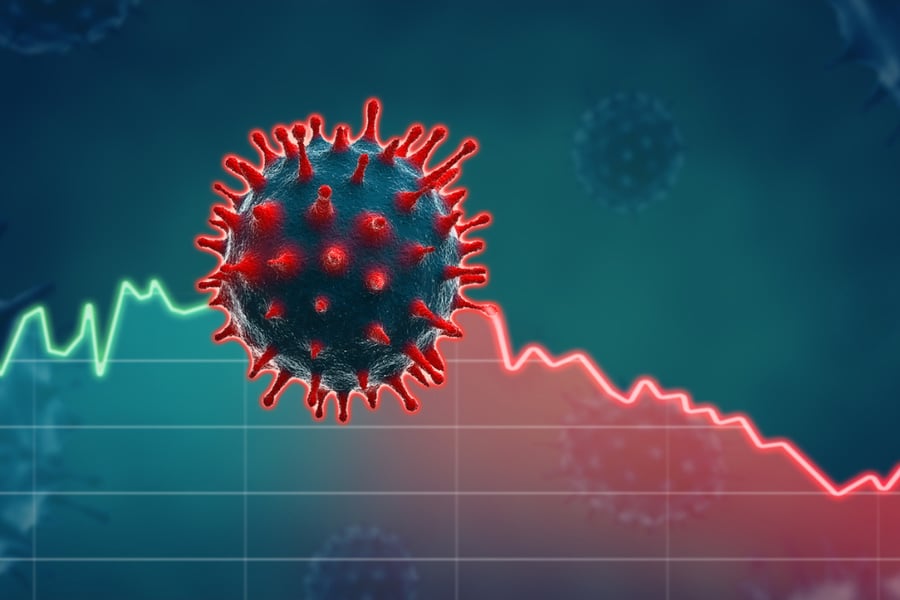A resurgence of the virus could result in a protracted, "muted" recovery

As governors in Georgia and South Carolina consider reopening parts of their states’ economies on Friday, there is anxiety around the potential impact a forced return to normal could have on the health of the country. A recent report from McKinsey & Company states that a public health response that fails to prevent a resurgence of the virus could result in a protracted economic recovery that won’t be complete until 2023.
The report describes multiple scenarios ranging from “rapid and effective control of virus spread”, in which COVID-19 is brought under control in each country within two to three months, to “broad failure of public health interventions”, where the virus’s spread cannot be contained. Based on the current state of the battle against COVID-19 – some states are still deep in the trenches, others are planning their victory parades –the US falls in the middle-tier: “effective response, but (regional) virus resurgence”, where social distancing is required for several months.
McKinsey assumes the most likely U.S. response to COVID-19 will be based on either partially or highly effective interventions. A partially effective policy intervention combined with a strong public health response would limit the economic fallout to a 2.4% contraction and an eventual recovery by the fourth quarter of 2020.
That’s the perfect world scenario. A far more likely outcome will include an effective public health response and partially effective interventions that results in a recovery McKinsey describes as “muted”. In this case, GDP shrinks by 2.7% in 2020 and remains in recession until the Q1 2023.
Justin Parker, senior vice president of treasury and capital markets at RCN Capital, feels an extended recovery seems reasonable considering the extreme volatility in the financial, commodity and labor markets, but three years, in his opinion, may be a tad pessimistic when one considers the strong fundamentals that were driving the economy only weeks ago.
“What goes up must come down,” he says. “When you’re at these peaks, there is a high level of sensitivity toward external events that are going to cause this natural correction.” As quickly as the economy was brought to its knees by COVID-19, Parker feels it has the potential to bounce back just as fast.
“Assuming we can get people back to work – markets become a little bit more liquid, businesses resume – I personally expect for us to see in the third and fourth quarter of this year a little bit of stabilization, and ultimately some signs of recovery,” that should gain momentum throughout 2021 and return the economy to pre-COVID-19 levels by some point in 2022, Parker predicts.
The industries McKinsey identifies as those most likely to be disrupted – commercial aerospace, air and travel, insurance, oil and gas, automotive and fashion – are also looking at drawn out recoveries. While most in this group are projected to see their fortunes improve by Q3 2020, the two airborne sectors are looking at recoveries that won’t begin until Q1 2021.
The report says nothing about small businesses, who are currently vying for a second batch of Paycheck Protection Plan funds. How small business responds to the crisis is likely to tell the tale of the recovery. Parker is optimistic that the unprecedented work done by the government to keep small businesses alive will mitigate some of the damage being experienced in this critical segment of the economy.
“It’s at least keeping these businesses on life support, and it’s a lot easier to resuscitate something that’s still alive than it is to resuscitate things that have been dead for a few months,” he says.
Real estate, while another topic left out of the McKinsey report, will undoubtedly play its part in the recovery. Parker is powerfully optimistic about the fate of the U.S. housing market. Although starts and investment in private housing will both suffer, and a 5-10% depreciation in home prices may be in the cards, he feels COVID-19 is no match for the fundamentals underpinning the market.
The lending landscape, however, will change. Parker says the current spike in forbearance requests and defaults means lenders must ensure they have the capability to manage a high exposure to non-performing loans. And when depreciation kicks in, they will have to adapt their lending practices to mitigate that downside risk.
Parker also sees secondary markets receiving more attention in the future. During the COVID-19 crisis, he explains, securitization markets have seized up and spreads have widened.
“It’s resulted in such a level of volatility that it provides no consistency towards knowing how best to structure and price-out real estate loans,” he says.
The report ends on a positive note, describing the fortunes of what it deems “the Resilients”, the top 20% of companies that thrived during the last recession. In addition to increasing revenue by 30%, McKinsey found that these firms also reduced operating costs, made early moves amidst the disruption and divested more during the downturn than they acquired immediately afterward.
Parker concedes that a comparison between the two disruptions is fair, but he believes the upcoming recession-recovery dance will be soundtracked by very different music this time around.
“Lending practices were a little out there,” prior to 2008-09, Parker says. “People were throwing money around like it was candy. Over time, we’ve really seen a lot more restrictions come into play that are ultimately not resulting in that now.”



